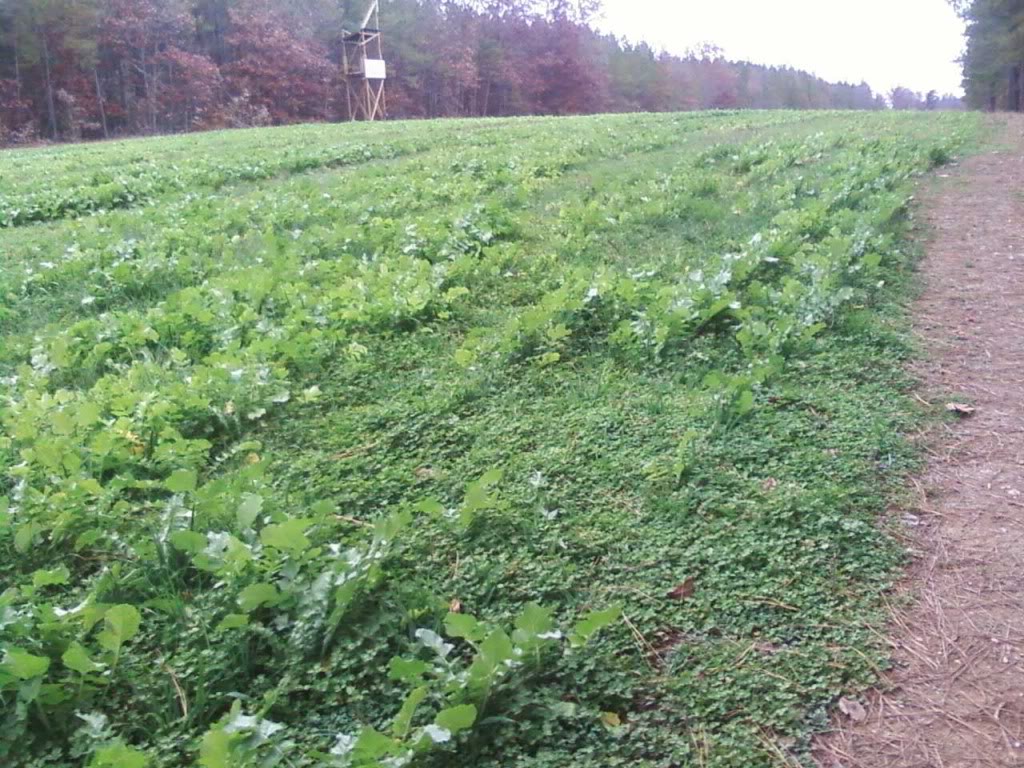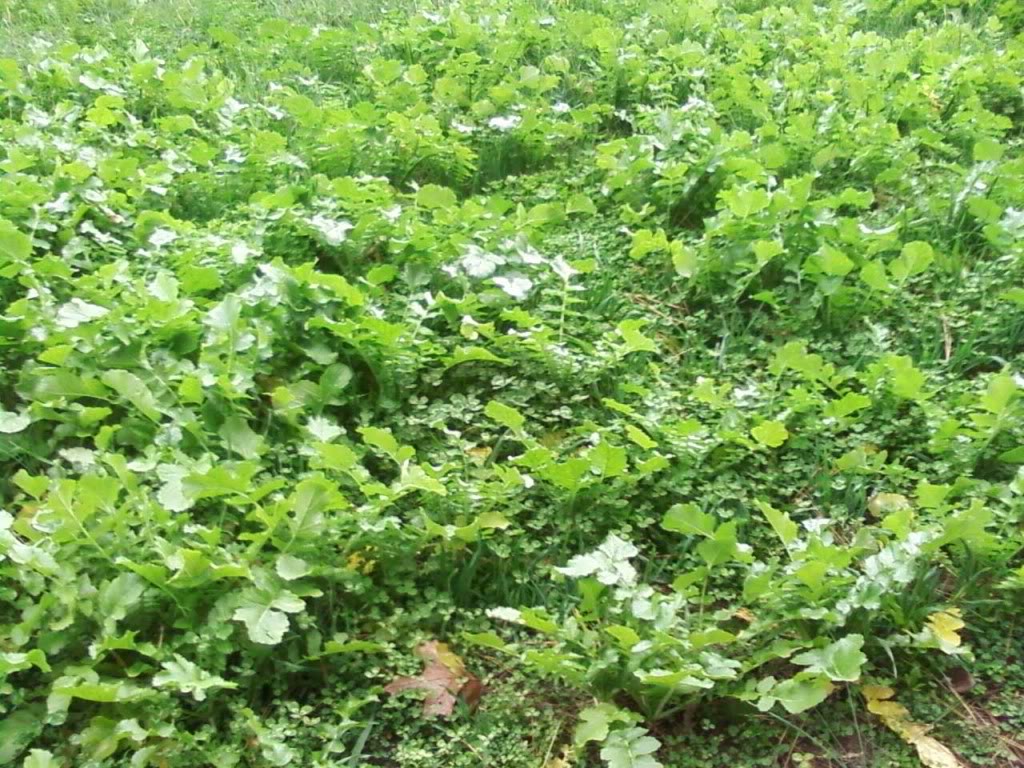davidhelmly
5 year old buck +
I manage a 1250 acre lease in W Central Ga and we have around 40 acres of plots, I normally try and keep about 25 acres in a clover mix and the remainder in a brassica mix. I mix cereal grain with everything that I plant but of course after the first year the clover plots are just clover, I overseeded all of our plots that were brassica last season with a clover mix last weekend because the deer had just hammered the brassica and most of the plots looked like they had been plowed from the deer digging up the bulbs. I normally rotate from clover to brassica when the clover gets extremely weedy, sometime I will do brassica just one year before going back to clover and sometime I will do brassica 2 years in a row before rotating back to clover.
All that being said I've really been reading a lot about cover crops and keeping something growing on the soil all the time for the last couple of years, that's the main reason I overseeded last years brassca with clover this past weekend. Our clover plots do pretty well most all year unless it just gets extremely hot and dry for extended periods in the summer, 2016 was the worst drought we have ever had that I can remember. With the exception of renting a no till drill one year I have always used conventional tillage and there is always a plot or two that I'm going to plant that doesn't get plowed for whatever reason until the planting day, those plots always have much more moisture than the plots that were plowed a week or two earlier and have just been baking in the sun so I know there is merit to keeping something growing at all times.
My question is, if I could get clover growing in all of our plots and then used either a no till or minimum till drill to plant either cereal grain or a brassica mix or both into the existing clover every fall and not spray the clover what would happen? Would the clover keep the plots covered and hold more moisture allowing the newly planted crop to take advantage of the added moisture and the nitrogen that the clover has fixed? If the brassica and cereal grain did well would the clover then take back over in the spring/summer if I mowed off the leftover vegetation from the previous planting and be ready for a repeat in October?
My experience with the no till I rented from the county a few years back was a complete nightmare due to lack of maintenance and broken parts not reported by previous renters so I won't go that route again, I spent pretty much an entire weekend working on it rather than planting with it. A 7-8' no till that plants multiple seeds is just WAY out of my price range so I've been looking at planters like the Woods, Plotmaster, and a few others. From what I've seen and read I think a Woods PSS84 would work great for me, I've read horrible reports on them but have also talked to several people who have them and just rave about them. It's doubtful that I will come up with the money for a planter this year but hopefully by next year it will happen.
There is a ton of knowledge here so all suggestions and comments are welcome, let me know what you think about my plan.
All that being said I've really been reading a lot about cover crops and keeping something growing on the soil all the time for the last couple of years, that's the main reason I overseeded last years brassca with clover this past weekend. Our clover plots do pretty well most all year unless it just gets extremely hot and dry for extended periods in the summer, 2016 was the worst drought we have ever had that I can remember. With the exception of renting a no till drill one year I have always used conventional tillage and there is always a plot or two that I'm going to plant that doesn't get plowed for whatever reason until the planting day, those plots always have much more moisture than the plots that were plowed a week or two earlier and have just been baking in the sun so I know there is merit to keeping something growing at all times.
My question is, if I could get clover growing in all of our plots and then used either a no till or minimum till drill to plant either cereal grain or a brassica mix or both into the existing clover every fall and not spray the clover what would happen? Would the clover keep the plots covered and hold more moisture allowing the newly planted crop to take advantage of the added moisture and the nitrogen that the clover has fixed? If the brassica and cereal grain did well would the clover then take back over in the spring/summer if I mowed off the leftover vegetation from the previous planting and be ready for a repeat in October?
My experience with the no till I rented from the county a few years back was a complete nightmare due to lack of maintenance and broken parts not reported by previous renters so I won't go that route again, I spent pretty much an entire weekend working on it rather than planting with it. A 7-8' no till that plants multiple seeds is just WAY out of my price range so I've been looking at planters like the Woods, Plotmaster, and a few others. From what I've seen and read I think a Woods PSS84 would work great for me, I've read horrible reports on them but have also talked to several people who have them and just rave about them. It's doubtful that I will come up with the money for a planter this year but hopefully by next year it will happen.
There is a ton of knowledge here so all suggestions and comments are welcome, let me know what you think about my plan.






